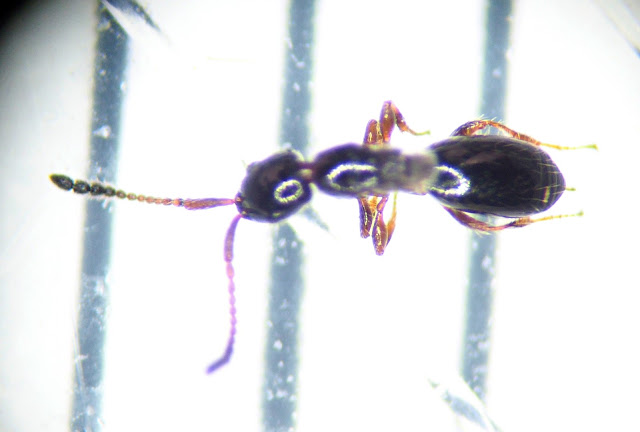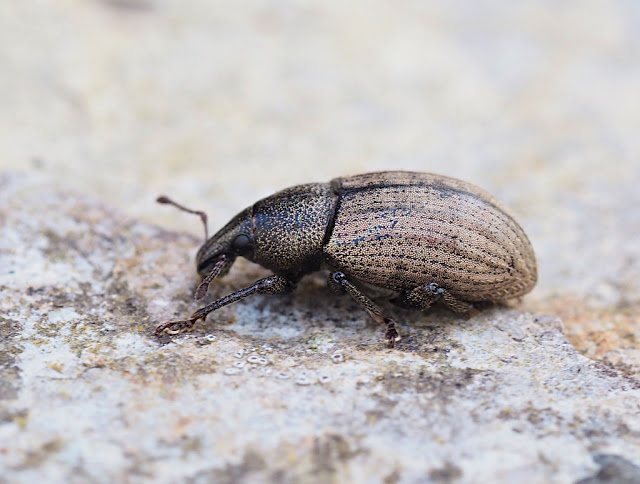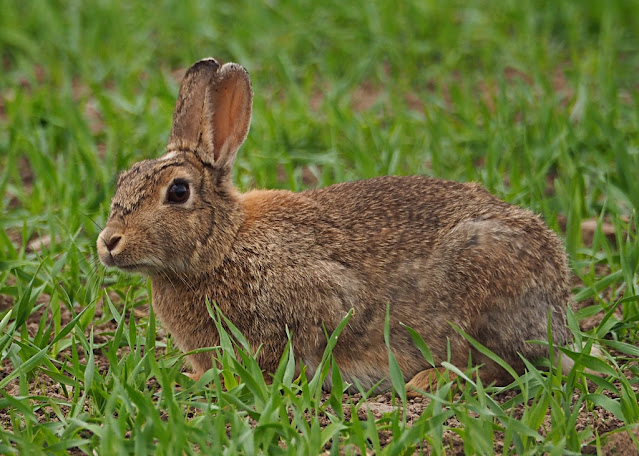An excursion to Burray proved both enjoyable and profitable (in terms of 365 species). On the way there, I popped in to see the Little Terns and had some decent views of full summer plumage Great Northern Divers.
We kicked off with a very civilised lunch (thanks LH), before heading out into the field. I was keen to get onto the foreshore, a sizeable chunk of BH's garden is tidal or littoral, it did not disappoint. Armed with the trusty pooter and spending a considerable amount of time crawling around on my knees we turned up a couple of Xantholomus tricolor, new for Orkney and not common nationally, Cercyon depressus, NFM, and a couple of other uncommon beetles for the county at least, Omalium laeviusculum and Lathrobium geminum. Again both these later two were new for me, although considerable help and assistance was required to get them to species (thanks MT and MF in particular).
 |
| Cercyon depressus, just look at that pronotum angling up basally! |
 |
| Lathrobium geminum, identification involved me blundering around a bit... |
 |
| Omalium laeviusculum, I'm gradually getting the hang of these. |
 |
| Probably beetle of the day, Xantholinus tricolor, the darkening of the pronotum towards the base is the ID feature. |
In identifying the Omalium I had to look up the meaning of shagreen. It was used in the key. A word I think I've heard of before but I didn't really know what it meant. It used to be used by entomologists in the 19th century, to describe a leathery texture with a green tint.
None of these beetles had been recorded more than a very few times in the county previously and the Xantholinus and Lathrobium are both new for the county.
There were a couple of other things in the pooter though, minute but interesting looking. The first was a Collembola, I can't seem to find the photo, anyway expert opinion is that it is of interest and I need to go back and find some more. The other we thought was a tiny ant.
Under the microscope back at base it looked like a tiny ant.
 |
| Not an ant. |
I took this image quickly with the TG4 down the microscope. Good job I did. Setting up the proper gear to get decent images I managed to have a disaster and lose the specimen. Aaaagggghh! The units are 1mm BTW.
There is probably only one species of ant in Orkney, the common red ant Myrmica ruginodis, there is a single record of the other red Myrmica but personally I'm a bit dubious.
Anyway, I contacted an ant person who was unsure what it was but she contacted a colleague who suggested a chalcid wasp, and that seemed possible. I then had to own up I'd lost the specimen... But, anyway, I posted the image on the Hymenoptera FB group more in hope than expectation, and got a definite identification to species, amazing! So the above is a wingless Diapriinae which is parasitic on the seaweed fly Orygma luctuosum (it might also be parasitic on the Ceolopa species), Platymischus dilatus. Many thanks to DN for the ID. There are just seven records of this beast on the NBN, although DN suggested to me that it is likely common enough everywhere there is seaweed accumulation on the beach and the associated seaweed flies. It is just very, very tiny and like most Hymenoptera, tricky to identify unless you happen to know. Another species new for the county anyway.
Back to Burray. LH found us a weevil, which BH had seen before, but I hadn't Barynotes squamosus.
 |
| Barynotes squamosus. |
BH baulked at my examining a long dead Pink-foot that I found half buried on the shore. It was full of beetle larvae, I glimpsed Nicrophorus humator. It certainly was seriously smelly, rancid even. Had I been at home that might be hanging over a bucket right now.
We then had a wizz around the garden for lichens and mosses. BH is a bit of an expert. I was quickly overwhelmed, but I took some photos and I will be able, with help I suspect, to sort out some of them.
Too soon it was time for a final cuppa and for me to head off back west. Super afternoon though.
The Burray trip relegated a much wanted Shunan tick to the back pages, so to speak. It has taken long enough, but just such a cracking quacker.
 |
| Green-winged Teal, on the right. It hung around, showing off, for a few days. |
I've seen them before on nearby Loch of Bosquoy but not in the 1 km square, nice one.
 Further unsuccessful attempts to get a decent hen Harrier picture, at least they were sharp this time. Gardening yesterday and one hunted briefly a few metres from me in the garden.
Further unsuccessful attempts to get a decent hen Harrier picture, at least they were sharp this time. Gardening yesterday and one hunted briefly a few metres from me in the garden.Botanical excursions have produced one or two new things, but getting things to species is quite a challenge.
 | |
| Sea Mouse-ear. |
I've run the moth traps once, Dark Sword-grass was nice but it's still a bit cold and very slow.
 |
| Barynotus moerens turned up in the moth trap, oddly. |
 |
| Somewhat more expected, Dark Sword-grass, a good migrant. |
This morning I wandered down to the Wee Wood and took a few pics.
 |
| Cheilosia illustrata, a common hoverfly. |
 |
| Green-veined White. |
 |
| Well chuffed, I suspected this might be Parasyrphus nigritarsis and the hover scheme confirmed it, thanks CS. A nationally quite uncommon hover and the sixth Orkney record. |
We've been gardening. It's not easy here, cold, windy and a plague of these....
 |
| Rabbit, the cat does his best but one a day is just nowhere near enough. |
And lastly.





No comments:
Post a Comment